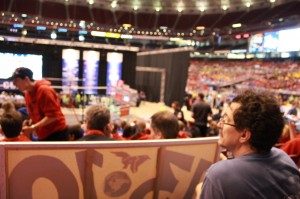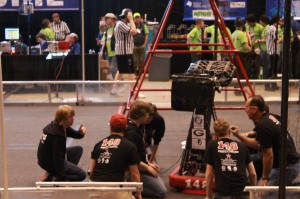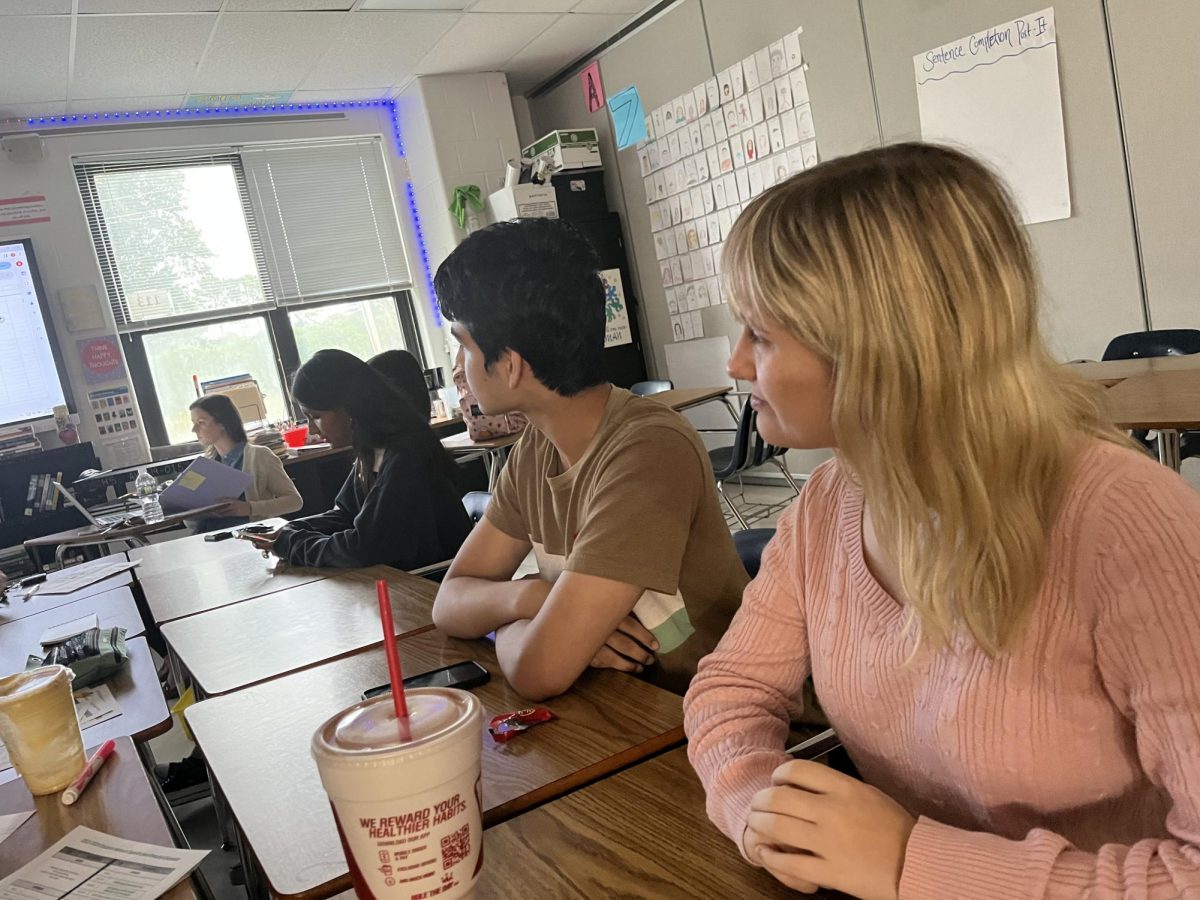The Francis Howell school district (FHSD) robotics team, Raven Robotics, qualified and competed in the FIRST Robotics Competition (FRC) championship held at the Edward Jones dome in St.Louis between April 25th and April 28th. Francis Howell North senior Matt Bries, who has been on the team for five years, said this was the first time they had qualified for the championship in his time on the team.
Bries said, “So far, it’s been our best year. [It was the] first time that we earned our way to the championships. We’ve gotten 2nd place in two competitions, first seed in the one in St.Louis. And we’ve been scoring up to 76 points in a round, which is up there.”
Raven Robotics starts holding meetings about every three weeks at the beginning of the school year. But the team doesn’t really get started until their annual kick-off in January at the science center. Every year, the task that the robots must perform changes, and the team only finds out at the January kick-off. This year’s task was shooting frisbees into goals and climbing a pyramid made of pipes.
After the kick-off, the team begins an intensive 6-week build session, meeting for three hours on Tuesday and Thursday and eight hours on Saturday. In order for the team to be competitive, the build session has to include more than design and construction of the robot.
FHN junior Logan Harmon was one of the members whose job didn’t involve direct work on the robot, “It’s all real hard stuff. Well considering my job, the hardest part of this year was building the pyramid. My job this year was field prop construction.”
After the robot had been built, the team competed in two regionals, one in St.Louis, MO and another in Terra Haute, IN. The team qualified for the FRC championship through the regional in Indiana. At the FRC championship, teams were randomly broken into four division: Curie, Newton, Galileo, and Archimedes. Each division had about 100 teams in it; Raven Robotics ended up in the Curie division.
Before each match, a team gets randomly paired with two other teams to create an “alliance”. Two alliances go head-to-head against each other, which means that robots have to play both on the offense and defense, to prevent other robots from shooting frisbees into their respective goal while at the same time trying to accrue as many points as possible.
Each team has around four drivers that stand with their alliance on their respective side, just outside the field blocked off for the robots to play on. The alliances and equipment are color-coded, with the commentators referring to alliances as the “red alliance” and “blue alliance”. After referees check the starting position of the robots and frisbees, the match starts with a 15 second autonomous period in which the team’s drivers are not allowed to control their robot in anyway.
During the next two minutes, the drivers are allowed to control the robots, rapidly moving them to block and shoot frisbees. The stadium is completely filled with people, and often all the members that are not currently driving the robot are screaming and shouting to cheer on. The commentator’s frenzied words are heard above the music playing in the background.
 When there are thirty seconds left, many robots stop shooting and begin climbing the pyramid. Once the buzzer rings, referees rush onto the field to check how far up the pyramid the robots have climbed.
When there are thirty seconds left, many robots stop shooting and begin climbing the pyramid. Once the buzzer rings, referees rush onto the field to check how far up the pyramid the robots have climbed.
Raven Robotics competed in eight preliminary matches, and ended with a record of four wins and four losses. Although they did not qualify for finals, they placed in 48th out of 100 in the Curie division.
Cory Plattenburg, FHN sophomore, said, “In future years, I want more recognition for the robotics team and better training for freshman and new members. I have a lot of projects I’d like to do to help them learn the tools and be a part of the team.”










